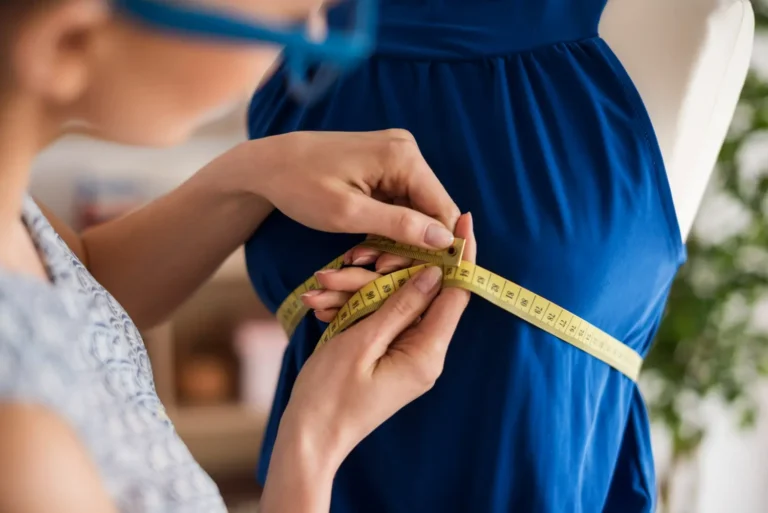Enjoy free shipping on all orders over $150!
12 Tips to identify high-quality clothing
Have you ever picked out a beautiful, trendy, and promising garment, only to find it doesn’t even survive the first wash? This happens to most of us. Leveraging our experience in industrial pattern-making and high-fashion garment production, we’ve compiled the 12 best tips to easily identify high-quality clothing.
If you’re looking to sharpen your skills in recognizing superior textiles, don’t miss these practical tricks:
1. Perform a quick wrinkle test
Grab a small portion of the fabric and squeeze it in your fist for about five seconds. High-quality fabrics will bounce back to their smooth texture with minimal wrinkling. If the fabric stays crumpled and looks difficult to smooth out, skip it.
Note: This test doesn’t apply to linen, which wrinkles easily by nature.
Check the elasticity
Stretch the garment gently and observe how quickly it returns to its original shape. Quality garments typically withstand this test without losing their form or showing visible deformation.
If the fabric remains stretched, distorted, or marked after this test, it’s best to avoid it.
Examine internal and external seams
Inspect the garment’s seams both inside and out.
- Inside: Look for loose threads and check for even, consistent stitching. Uneven or inconsistent seams are a red flag.
- Outside: Pay attention to poorly finished edges, weak stitching, or loose threads.
Any of these issues suggest the garment may not hold up over time.
Inspect zippers closely
High-quality garments often feature hidden zippers for a smoother and more elegant look. Exposed zippers are acceptable when they’re part of the design, but in general, simplicity is key.
Ensure that:
- Zippers move smoothly without sticking.
- There are no loose threads around the zipper area.
For extra scrutiny, check the stitching around the zipper. Attention to these details often indicates the brand’s commitment to quality.
Use the backlight test
Hold the garment up to a bright light source to see how much light passes through it. Thicker fabrics generally last longer and are more durable.
Combine this test with the elasticity check to assess overall quality.
If you love the garment but feel the fabric is too thin, consider looking for a similar design in the men’s section, as these are often made with thicker materials by default.
Read the label
The label provides valuable information about the garment’s composition. Opt for pieces with a higher percentage of natural fibers such as cotton, wool, or silk, as these are typically more durable than synthetic blends.
Research the brand
Brands with a solid reputation often have rigorous quality control processes. Look up reviews and customer feedback on the brand’s durability, craftsmanship, and overall quality.
However, don’t discount emerging brands—many new designers are creating high-quality, innovative pieces. A little research can go a long way.
Pay attention to pattern alignment
For garments with prints or patterns, ensure that designs align seamlessly at seams and joints. Poorly aligned prints indicate rushed production and lower-quality standards.
Use price and instinct as indicators
While price isn’t always a direct indicator of quality, it can serve as a guideline. Consider the following:
- Compare the garment to similar pieces within the same price range.
- Trust your instincts—quality garments tend to feel better to the touch and stand out even among similarly priced items.
Check for discoloration near seams
Low-quality fabrics may show discoloration around the seams due to poor dye absorption. If you notice lighter areas around the stitching, it’s best to leave the item behind.
Inspect buttons and buttonholes
Buttons and buttonholes reveal a lot about a garment’s craftsmanship. Ensure:
- Buttons are securely attached without loose threads.
- Buttonholes are neatly stitched and free of fraying.
Also, inspect hidden areas like inner seams and edges for any signs of poor quality, such as stray threads or weak points.
Look for extras
Some brands include thoughtful extras like spare buttons or extra fabric for alterations. While not a definitive sign of quality, it shows the brand’s commitment to durability and customer satisfaction.
Conclusion
By following these 12 tips to identify high-quality clothing, you’ll see a significant improvement in your wardrobe’s longevity and overall satisfaction.
If you’re passionate about fashion and want to dive deeper into these concepts, be sure to check out the courses we offer at Andrespert. Discover how to elevate your fashion knowledge and refine your personal style!
